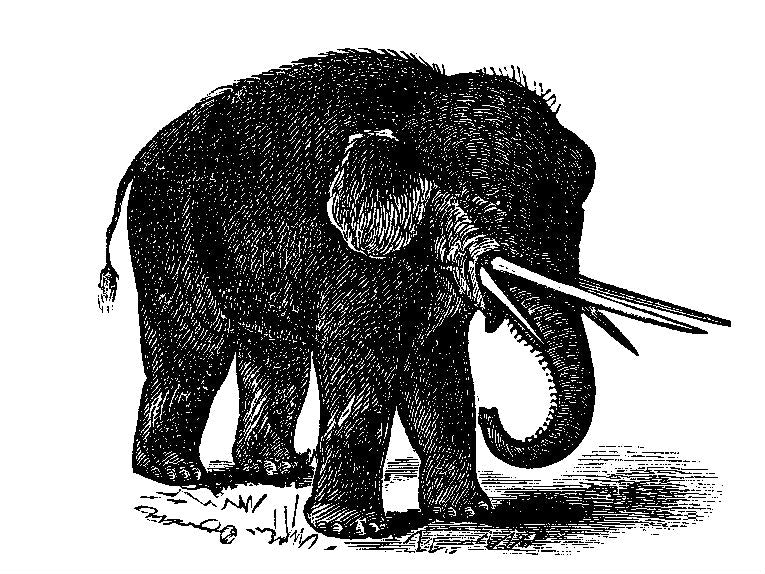North Americans will be pleased to find that their history has been backdated by 800 years. Texas A&M University researched in Washington State with the help of universities from Colorado, Washington and, of course, Denmark. The research is published in the journal, Science. A mastodon is the original star of the show, found in a pond at the Manis site on the Olympic peninsula. It is now carbon-dated at 13,800 years old. With some bones broken, the usual suspects were human hunters, even though no stone implements of any kind were found there. Only a bone point sticking in a rib (and, critically, present long before death) gave us the clue needed. Have a look at the spear and the bone growth around it here in a CT scan:

CT scan showing the embedded spear point; Credit: Texas A&M University
Carl Gustafson of Texas A&M originally discovered the bone point which has been confirmed as a spear tip. The big "point" for the animal was that the spear itself was made from its own species. Certainly Gustafson found other mastodon skeletons there and decided the animals head had been orientated in such a way as to suggest human interference.
During the last Ice Age, several species of large mammal inhabited the Washington area, but they were extinct before the Ice Age ended. Stone tools began to be utilised by humans in America13,000 years ago. The Clovis point was the name given to such a weapon from Texas and Mexico, made of stone and giving its name to the whole culture, also called the Llano culture. This precedence of bone implements before the date of Clovis stone age culture helps to elucidate those old arguments about who was first in America. While several arguments might never be resolved, more and more evidence about the extinction of mastodon, mammoth, horse and camel by humans is building. Colonisation of genetically-proven ancestors from "Beringia" and their subsequent migrations are also likely to be backed up, if not proven.
This is Michael Waters, the director of the Center for the Study of the First Americans in the Department of Anthropology at Texas A&M. His final word was that, "the evidence from the Manis site is helping to reshape our understanding of the earliest inhabitants of the Americas, the last continent to be occupied by modern humans." Remembering of course that he has other mastodon kill sites (in Wisconsin) to further his understanding.
Video: Mike Waters, Anthropology Professor at Texas A&M










